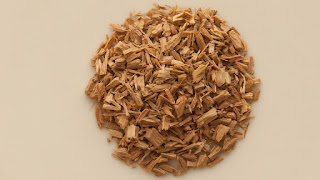White sandalwood is a tree that is native to Australia and India. The tree has many benefits, including its wood being used in furniture and its oil being used in perfumes. However, there are also some side effects of white sandalwood that you should be aware of before using it.
What is white sandalwood?
White sandalwood is an evergreen tree that grows in India and other parts of Asia. The tree can grow up to 30 meters tall and has a wide, spreading canopy. The leaves are dark green, glossy, and slightly serrated at the edges. The flowers are small and white, growing in clusters. The fruit is a small, fleshy drupe that turns red when ripe.
The wood of the white sandalwood tree is very hard and dense. It has a smooth texture and is pale yellow or cream-colored with a hint of pink. The heartwood is highly scented and used in many different ways. In India, it is used to make incense, perfumes, and cosmetics. It is also used in Ayurvedic medicine to treat various ailments such as coughs, colds, stomach problems, and skin diseases.
The oil extracted from the heartwood of the white sandalwood tree has many different uses. It is used as an ingredient in soaps, lotions, creams, perfumes, and cosmetics. It is also used in aromatherapy to promote relaxation and well-being. The oil has a sweet, woody scent that is both calming and refreshing.
The benefits of white sandalwood
When it comes to benefits, white sandalwood is said to be good for the skin, hair, and nails. It’s also used as an anti-inflammatory, anti-fungal, and antiseptic agent. White sandalwood is commonly found in soaps, cosmetics, perfumes, and lotions.
As an anti-inflammatory agent, white sandalwood can help reduce inflammation and redness in the skin. It’s also been shown to be effective in treating acne and other skin conditions.
White sandalwood is also said to be beneficial for the hair. It’s thought to help with hair growth and can also make the hair softer and shinier. In addition, it can help to control dandruff and oily scalp conditions.
Finally, white sandalwood is also said to be good for the nails. It can help to strengthen nails and protect them from damage.
The side effects of white sandalwood
There are a few potential side effects of white sandalwood that you should be aware of before using it. These include:
1. Skin irritation: White sandalwood can cause skin irritation in some people. If you have sensitive skin, it's best to test a small area first to see how your skin reacts.
2. Allergic reactions: Some people may be allergic to white sandalwood. If you experience any signs of an allergic reaction, such as swelling, hives, or difficulty breathing, stop using the product and seek medical attention immediately.
3. Eye irritation: White sandalwood oil can cause eye irritation if it gets into the eyes. Avoid contact with the eyes and wash your hands thoroughly after applying the oil.
4. Respiratory problems: Inhaling white sandalwood oil can irritate the respiratory system and cause coughing and difficulty breathing. Avoid inhaling the oil and use in well-ventilated areas only.
How to use white sandalwood
White sandalwood has a wide range of benefits that have been known for centuries. It can be used to treat a number of conditions, including:
- Skin conditions: White sandalwood can be used to treat eczema, psoriasis, and other skin conditions.
- Respiratory conditions: White sandalwood can be used to treat bronchitis, asthma, and other respiratory conditions.
- Digestive conditions: White sandalwood can be used to treat diarrhea, constipation, and other digestive conditions.
- Psychological disorders: White sandalwood can be used to treat anxiety, depression, and other psychological disorders.
Conclusion
White sandalwood is an amazing plant with many benefits. It can help improve your skin, hair, and overall health. However, it is important to be aware of the potential side effects before using it. If you have any concerns, be sure to speak with a healthcare professional. Otherwise, enjoy all the benefits that white sandalwood has to offer!

Comments
Post a Comment